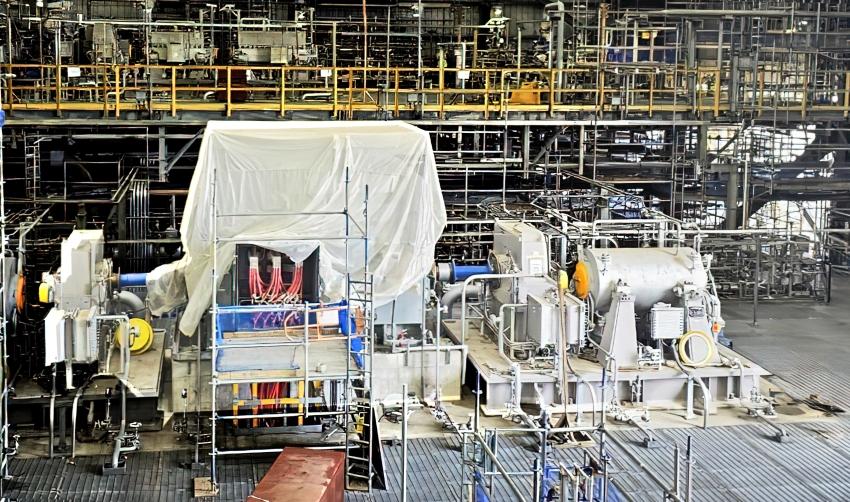Fertilizer International 515 Jul-Aug 2023

31 July 2023
Passionately committed to sustainability
Editorial
Passionately committed to sustainability
Despite being an age-old industry, the phosphate sector remains vibrant and driven by a passionate commitment to leaving behind a sustainable world for future generations. Tibaut Theys, general manager of Prayon Technologies, explains how the industry, by implementing more efficient production processes and promoting responsible fertilizer usage, is working urgently to reduce CO2 emissions, as well as striving to minimise its environmental footprint.

The phosphate industry is constantly evolving in response to a range of challenges and emerging trends.
Phosphate rock – as a vital resource for fertilizer production – plays a crucial role in the supply of phosphorus for global agriculture. Its availability for future generations could, however, become increasingly limited. This is due to new and emerging market uses, such as the development of lithium iron phosphate (LFP) batteries, as well as rising phosphate rock consumption for fertilizer production.
The phosphate industry, as well as having resource availability concerns, is facing a series of other pressing issues. These include the need to control carbon dioxide emissions and comply with environmental regulations. There also needs to be a fundamental change in public attitudes about the large quantities of gypsum generated by the industry.
To address these challenges, the phosphate industry has committed itself to making a series of sustainability improvements that prioritise innovation, new technologies and investment in education. Moroccan producer OCP, for example, has re-invested a lot of its earnings to create UM6P, one of Africa’s best and most modern universities.
Others in the industry are creating technologies that ensure the utilisation of low-grade phosphate rock. One example is the dicalcium phosphate (DCP) ‘super rock’ process. Fertilizers produced from DCP deliver phosphorus to plants in a highly concentrated and water-soluble form at critical growth stages. The ability to precisely time phosphorus applications also boosts the uptake of other plant nutrients such as nitrogen. This makes DCP an almost perfect raw material.
Furthermore, the industry has made significant strides in developing removal technologies that extract impurities like aluminium, iron, magnesium, cadmium and other deleterious elements from phosphoric acid. As well as improving the quality of the final product, these latest advances also ensure compliance with new regulatory norms. This is particularly critical in regions like Europe where mandated limits on elements such as cadmium have been introduced.
The economic recovery of valuable rare earth elements (REEs) is another area of focus for the phosphate industry. Developing viable technologies to extract these from phosphate deposits – given the increasing industrial demand for REEs – represents a significant step towards resource efficiency and sustainability. Nevertheless, the low concentration of these elements means the profitability of such processes is not always guaranteed.
Changing attitudes about the gypsum stored in waste stacks has become a top priority for the industry too. The aim is to shift how gypsum is perceived so that it becomes viewed as a valuable by-product. Collaborative partnerships between phosphoric acid producers, universities, research bodies, and governments have all played a vital role. These have led to changes in the legal status of gypsum, ensuring it is classified as a by-product and not as waste.
Remarkable achievements have been witnessed because of this. Gypsum generated by the phosphate industry is now being employed in a wide range of applications such as road foundations, construction blocks, cement, plaster, soil amendment, mine reclamation and so on. Nowadays, gypsum is also playing a vital role in improving the fertility of saline and acid soils. The notable success of countries like Brazil in utilising all the gypsum they produce is setting a positive example for other nations to follow.
In conclusion, the phosphate industry recognises the challenges it faces and is actively working towards sustainable solutions. Through technological advances, such as the DCP ‘super rock’ process, impurity removal technologies, rare earth recovery, and the utilisation of gypsum as a valuable by-product, the industry is making significant progress. By continuing to embrace innovation and collaboration, the phosphate sector will play a pivotal role in providing essential resources for global agriculture while minimising its environmental impact. It is through these collective efforts that we can build a more sustainable future for generations to come.
Looking ahead, pioneering research and development is exploring new frontiers and developing the technological solutions of tomorrow. This dedication to innovation is crucial for maintaining the phosphate industry’s relevance – by ensuring it can adapt to the ever-changing dynamics of the global market and meet the future sustainability challenges facing us all.






